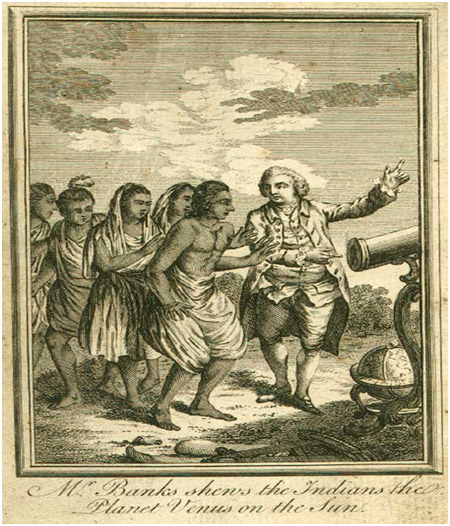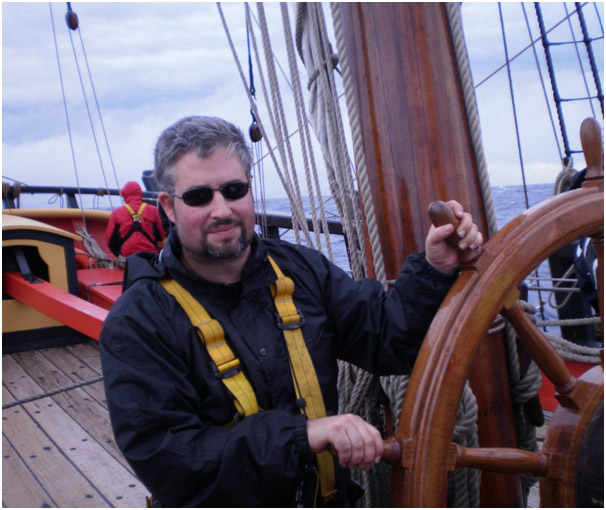
On 3 June 1769, astronomers around the world gazed through telescopes in feverish excitement, watching a small black dot pass across a large orange disc. They were observing the transit of Venus across the Sun and they were timing it. The event marks a key moment in a 250-year quest that is one of the great stories of modern science. It was a quest to calculate the size of the solar system that had a remarkable impact on the course of history.
From the time of Edmund Halley, astronomers believed that precise observation of the transit from diverse points across the globe could allow them to use trigonometry to calculate the distance from the Earth to the Sun. In 1761, and again in 1769, expeditions crossed the Earth to gather data. For the 1769 transit, Captain James Cook was sent to make observations from Tahiti – an island only just discovered by Europeans. This event provided the impetus for the most historically important European maritime voyage since the time of Christopher Columbus. It led to developments in botany, zoology and ethnography that permanently changed European world views. Ultimately, it also paved the way for the British colonisation of Australia.

In June 2012 people across the world stared once again at the heavens to see a transit of Venus. To mark the event, Dr Alex Cook from the School of History, took part in an expedition aboard a modern replica of Cook’s ship, the Endeavour, to observe the transit at Lord Howe Island.
Find out more about Alex’s adventures, by visiting the Australian National Maritime Museum's blog.
You can also find out more about this event, and other key moments in eighteenth-century History, by enrolling in his course The Birth of Modernity: Britain 1688-1848, in Semester 2 2012.